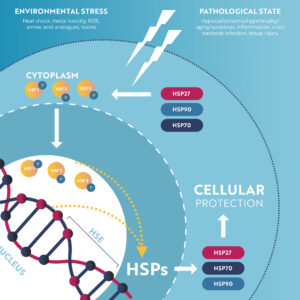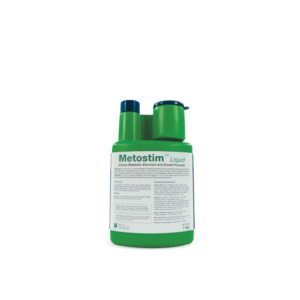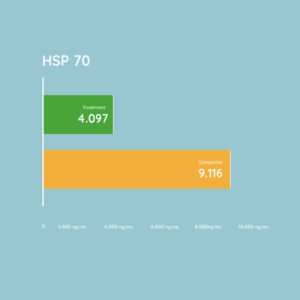Worldwide, the effect of climatic change has become a great challenge in poultry production. As the global climate is changing, it alters the environmental temperatures, precipitation patterns and atmospheric carbon dioxide. Poultry farming mainly depends on climatic conditions such as temperature and humidity. Several factors can be involved but heat stress is one of most important environmental factors influencing a wide range of chicken performances including reduced feed intake which, in turn, affects growth rate, body weight,egg production , egg quality, meat quality, semen quality and fertility; these negative influences result in great economic losses. There are so many extrinsic methods undertaken by farm managers to subside heat stress even birds try to relieve themselves from heat stress by intrinsically producing heat shock protein(HSP) which helps in protecting stressed cells and stabilization of the internal environment. During heat stress synthesis of most proteins are hampered, but a group of highly conserved proteins known as heat shock proteins or heat stress proteins are rapidly produced (Al-Aqil and Zulkifli, 2009).
Heat shock protein
- HSP was first reported in the year 1962 in Drosophila salivary gland cells which was exposed to 37oC for 30 min and then kept at normal temperature of 25 ˚C for recovery, a “puffing” of genes was seen in the chromosome of recovering cells (Ritossa, 1962).
HSP is classified into 3 main families based on molecular weight as follows:
- HSP90 (~85–90 kDa)
- HSP70 (~68–73 kDa)
- Low molecular weight HSP (~16–47 kDa) (Basu et al., 2002)
Mode of action:
There are two families of heat shock proteins, molecular chaperones and proteases. Both of them perform a different function to enable cell survival.
- Proteases, e.g., HtrA or Clp, Escherichia coli Lon, degrade damaged proteins.
- Chaperones sustain and control the native structure of proteins by protecting and stabilizing stress labile proteins, renaturation of denatured proteins, and preventing protein aggregation. They are accountable for refolding of misfolded and aggregated protein (Mayer and Bukau, 2005)
- Stress causes activation of specific transcription factors (HSF) primarily HSF-1. The accumulation of denatured proteins in the cytosol will trigger the HSF-1 as the first step in the stress response. Trimer formation of phosphorylated HSF-1 initiates its movement into the nucleus where it binds to stimulate the promoter region (heat shock element) and induce HSP gene expression the produced HSPs subsequently bind to the degenerated proteins which lead to aggregate proteins and helps in the synthesis of polypeptides.
- Tamzil et al. (2013) have stated an increase in HSP-70 expression in three chicken lines (Kampong, Arabic and commercial) when exposed to acute heat stress (40˚C for 0, 0.5, 1.0 and 5h). Hao et al., (2012)reported level of HSP-70 occurred only after 3 h of heat stress in poultry birds.
Omics Study proves less expression of HSP 70 in farm trials.
Bentoli’s innovative solution, Metostim is designed to accelerate the development of the digestive system, to improve the general immune status of the young birds and to reduce the stress during challenging periods starting from early chick stage till marketing.
Metostim is powered by 18 essential and nonessential amino acids, all important fat soluble and water soluble vitamins, electrolytes, essential trace minerals, vitamin C, betaine hydrochloride, curcumin extract and live gut acting probiotic to offers multiple benefits during stressful early chick stage and growing period of chicken
Recent nutrigenomics study conducted in Bentoli’s research facility proved that treatment group supplementation with Metostim had low expression of heat shock protein 70 (HSP70) compared to another group supplemented with another product claiming similar benefits in chicks. Lower expression of HSP70 is the indicator of lower level of stress in the flock supplemented with Metostim




